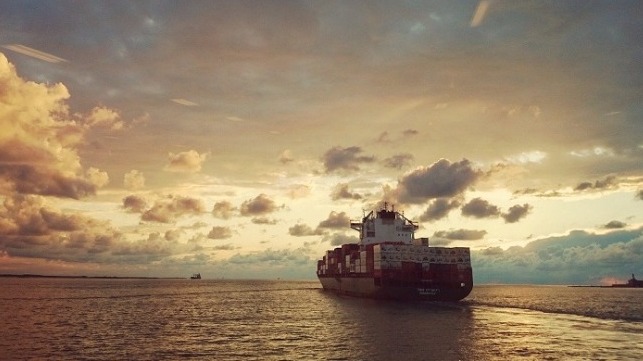Sea-Intelligence: Carriers are Increasing Blank Sailings in October

The major shipping lines are once again resorting to blanking sailing from their schedules as a means of controlling capacity after an extended period of deploying every available ship to meet the surge in demand. Using the guise of the upcoming Golden Week holiday tied to China’s Autumn Festival, carriers are expected to increase the number of canceled sailings above historic norms according to the latest calculations from the analysts at Sea-Intelligence. Their data support the earlier predictions by carriers such as Maersk and Hapag-Lloyd which called for a slowing and market normalization in the second half of 2022.
“Blank sailings have for long been the carriers’ preferred way of matching supply with demand,” says Alan Murphy, CEO of Sea-Intelligence. “This is what we would call tactical blank sailings. With Golden Week coming up (starting October 1st), it presents carriers with the opportunity to blank more sailings than they historically would, and likely come under less pressure from cargo owners, for artificially managing freight rates by cutting capacity short.”
For much of 2020 and 2021, Sea-Intelligence notes that carriers struggled to maintain capacity in line with the stresses of demand. The surge in shipping volumes and the sheer number of containers that shippers were trying to move meant that vessels were operating at capacity. Backlogs were developing at the points of origin even with carriers adding extra vessels to the routes if they could locate available tonnage.
Similarly, at the destination ports, especially in the United States and Northern Europe, congestion developed as the ports were overwhelmed by the volumes. In separate reports, Sea-Intelligence has tracked the decline in schedule reliability falling to a point that two-thirds of all vessels were behind schedule and port wait times increased to record highs. With vessels stuck outside ports, carriers could not meet their published weekly departure schedule, resulting in a different type of blanked sailing which Sea-Intelligence calls “forced or operational blank sailings.”
Carriers sought to limit the number of forced blank sailings and as port congestion has declined the shipping lines have been better able to maintain their schedules. Sea-Intelligence reported in August 2022 a steady improvement in reliability and a drop in the number of days waiting at ports.
“In the past few months, however, demand growth has stalled, vessels are not fully utilized, and freight rates have been dropping consistently and considerably,” says Murphy. “This is where the carriers would naturally resort to tactical blank sailings, to stem the bleeding in freight rates.”
Sea-Intelligence reports that carriers are using the Golden Week period, October 1 to October 7 in China as an opportunity to reduce capacity to balance against falling volumes and hopefully slow the decline in spot freight rates. They are forecasting an increase in blank sailings above the averages pre-pandemic.
Sea-Intelligence calculates on transpacific routes that capacity reductions are slated to be 22 to 28 percent of deployed weekly TEU capacity in the weeks following Golden Week. By comparison, they report that the peak reduction for those weeks in 2019 was 15 to 17 percent. Between 2014 and 2018, they further report that the average was between 9 and 11 percent.
“We see higher numbers on Asia-North Europe as well, with the peak capacity reduction following Golden Week,” says Murphy. Sea-Intelligence is calculating an expected decrease at a little under 20 percent of TEU capacity, which, while in line with 2019, is higher than the 2014-2018 average. Asia-Mediterranean on the other hand is the only trade lane of the four to see capacity reduction during Golden Week 2022, in line with 2014-2019.
These decreases in capacity come at what is typically a peak shipping period on most routes as retailers build inventory for year-end sales. It remains to be seen how long the carriers will carry forward these blank sailings or if they expect to maintain lower capacity in response to the declines experienced on most major shipping routes.
